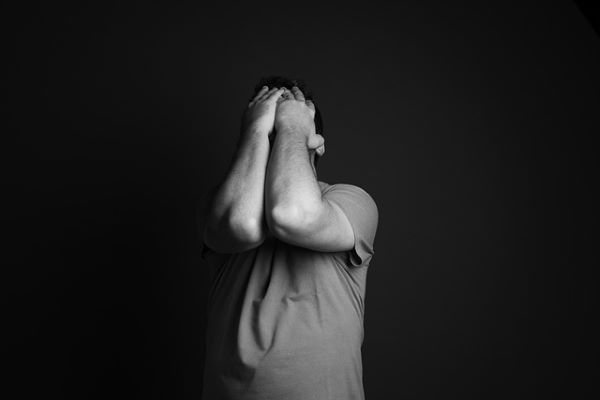Social Phobia Disorder, also known as Social Anxiety Disorder (SAD), is a prevalent mental health condition characterized by an intense fear of social situations and being judged or embarrassed in public. In India, the awareness of mental health issues has increased, but many misconceptions and myths still surround disorders like Social Phobia. According to a study published in the Indian Journal of Psychological Medicine, the prevalence of Social Anxiety Disorder in India is estimated to be around 2-5% of the population, with a higher prevalence in urban areas due to increased social and professional demands . Despite its commonality, many people misunderstand Social Phobia, leading to stigmatization and inadequate treatment. This article aims to debunk common myths surrounding Social Phobia Disorder and provide accurate, research-based information.
10 Common Myths About Social Phobia Disorder
Myth 1: Social Phobia is Just Shyness
Fact: Social Phobia Disorder is often mistaken for shyness, but the two are not the same. While shyness is a personality trait, Social Phobia is a debilitating condition that interferes with daily life. According to the National Institute of Mental Health (NIMH), Social Phobia involves intense anxiety that can lead to avoidance of social situations and significant distress. (Source)
Myth 2: Social Phobia is Rare
Fact: Social Phobia is one of the most common mental health disorders globally. In India, its prevalence is rising due to urbanization and increased social pressures. The World Health Organization (WHO) reports that Social Phobia affects millions of people worldwide, making it a widespread issue that requires attention. (Source)
Myth 3: Social Phobia Only Affects Teenagers
Fact: While Social Phobia often begins in adolescence, it can affect individuals of any age. The Mayo Clinic notes that the disorder can persist into adulthood if left untreated, affecting a person’s ability to work, socialize, and maintain relationships. (Source)
Myth 4: People with Social Phobia are Anti-Social
Fact: Social Phobia is not the same as being anti-social. People with this disorder often desire social interaction but are overwhelmed by fear and anxiety. The American Psychological Association (APA) clarifies that Social Phobia is driven by a fear of negative evaluation, not a lack of interest in socializing. (Source)
Myth 5: Social Phobia Will Go Away on Its Own
Fact: Without treatment, Social Phobia is unlikely to improve and may even worsen over time. The National Alliance on Mental Illness (NAMI) emphasizes the importance of early intervention, including therapy and medication, to manage symptoms effectively. (Source)
Myth 6: Social Phobia is Not a Serious Condition
Fact: Social Phobia can severely impact a person’s quality of life, leading to isolation, depression, and even suicidal thoughts. The Indian Journal of Psychiatry highlights the significant burden of Social Phobia on individuals and society, making it a serious public health concern.
Myth 7: Social Phobia is a Result of Poor Upbringing
Fact: Social Phobia is not caused by poor parenting or upbringing. While environmental factors can contribute, the disorder is rooted in genetics, brain chemistry, and life experiences. The National Health Service (NHS) states that Social Phobia often has complex causes, including biological and psychological factors . (Source)
Also, read: Now Debunking 10 Common Postpartum Psychosis Myths
Myth 8: Social Phobia is Just an Excuse to Avoid Social Situations
Fact: Social Phobia is a genuine mental health condition, not an excuse or laziness. People with Social Phobia experience real and intense fear that can be paralyzing. The Anxiety and Depression Association of America (ADAA) notes that the disorder requires understanding and treatment, not judgment . (Source)
Myth 9: Only Women Experience Social Phobia
Fact: Social Phobia affects both men and women, though it may be more commonly reported by women. The National Institute of Mental Health (NIMH) reports that Social Phobia is prevalent across genders, and men may underreport symptoms due to social stigma .
Myth 10: Social Phobia Can Be Cured by “Just Facing Your Fears”
Fact: While exposure therapy is a common treatment, simply telling someone to “face their fears” without professional guidance can be harmful. The American Psychiatric Association (APA) recommends a structured treatment plan that includes therapy, medication, and support. (Source)
Frequently Asked Questions (FAQs)
Q1: What are the common symptoms of Social Phobia Disorder?
A1: Common symptoms include intense fear of social situations, avoidance of social events, physical symptoms like sweating or trembling, and a constant fear of being judged or embarrassed.
Q2: How is Social Phobia Disorder diagnosed?
A2: Diagnosis is usually made by a mental health professional through a clinical evaluation, considering the severity and duration of symptoms, and how they impact daily life.
Q3: What treatment options are available for Social Phobia Disorder?
A3: Treatment options include cognitive-behavioral therapy (CBT), medication such as selective serotonin reuptake inhibitors (SSRIs), and support groups.
Q4: Can Social Phobia Disorder be prevented?
A4: While it cannot be entirely prevented, early intervention, stress management, and building social skills can help reduce the risk of developing Social Phobia Disorder.
Q5: Is Social Phobia Disorder curable?
A5: While there is no cure, Social Phobia Disorder can be effectively managed with proper treatment, allowing individuals to lead fulfilling lives.





